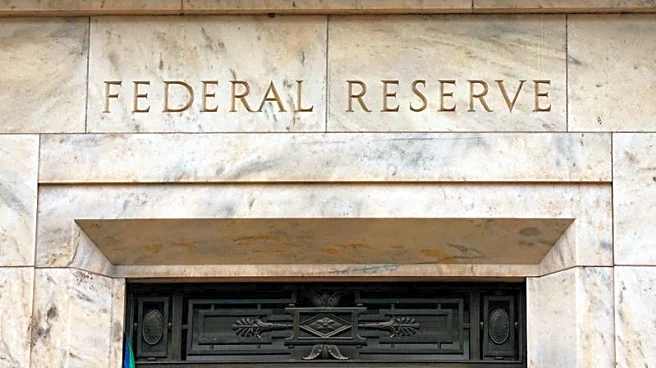What's Happening?
The Dow Jones Industrial Average (DJIA) is poised to open higher following the release of the latest inflation data. The Personal Consumption Expenditures (PCE) index, which is the Federal Reserve's preferred measure of inflation, showed a monthly increase of 0.3% in August, aligning with consensus estimates. On a year-over-year basis, the PCE rose by 2.7%, also matching expectations. The Core PCE, excluding food and energy, increased by 0.2% month-over-month and 2.9% year-over-year, both figures meeting their respective estimates. This data has influenced market sentiment, with investors anticipating potential monetary policy adjustments.
Why It's Important?
The alignment of the PCE index with expectations is significant as it impacts the Federal Reserve's monetary policy decisions. With inflation data showing no surprises, the probability of a rate cut at the upcoming Federal Open Market Committee (FOMC) meeting has increased to 87.7%, up from 85.5% the previous day. This potential rate cut could affect borrowing costs, consumer spending, and investment strategies across various sectors. The Fed's recent decision to cut rates by 25 basis points, despite dissent from Fed Governor Stephen Miran, underscores the ongoing debate over the appropriate level of monetary stimulus needed to sustain economic growth.
What's Next?
The next steps involve closely monitoring the Federal Reserve's actions at the October 28-29 FOMC meeting, where a decision on interest rates will be made. Market participants will be watching for any signals from the Fed regarding future rate adjustments, which could influence stock market trends and economic forecasts. Additionally, investors will continue to assess economic indicators to gauge the health of the U.S. economy and adjust their strategies accordingly.
Beyond the Headlines
The broader implications of the Fed's monetary policy decisions extend to global markets, as changes in U.S. interest rates can affect currency values, international trade, and foreign investment flows. The ongoing discussions within the Fed about the size and timing of rate cuts reflect differing views on how best to manage inflation and support economic growth, highlighting the complexities of monetary policy in a dynamic economic environment.











